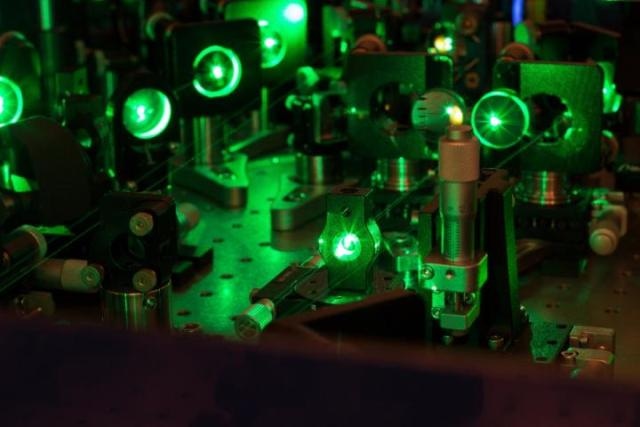Jul 19 2016
A team of researchers at Lund University have successfully measured the solar energy’s flow, in and between varied parts of a photosynthetic organism for the first time. This research would be the first step to ultimately contribute to the progress of technologies that apply solar energy much more efficiently than what is possible at the moment.
 Scientists have been able to locate the routes along which solar energy is transported during the photosynthesis using ultrafast spectroscopy. (Photo credit: Marcelo Alcocer)
Scientists have been able to locate the routes along which solar energy is transported during the photosynthesis using ultrafast spectroscopy. (Photo credit: Marcelo Alcocer)
For nearly eight decades, researchers are aware that photochemical reactions within an organism do not happen in the same area where sunlight is absorbed. However, until now researchers were not aware of what routes the solar energy took within the photosynthetic organism and how this happened.
Not even the best solar cells that we as humans are capable of producing can be compared to what nature performs in the first stages of energy conversion. That is why new knowledge about photosynthesis will become useful for the development of future solar technologies.
Donatas Zigmantas, Faculty of Science, Lund University
Along with his colleagues Jakub Dostál, Lund University, and Jakub Pšenčík, Charles University in Prague, Donatas Zigmantas has explored the photosynthesis of bacterial cells.
Using ultrafast spectroscopy, a measurement technique that applies light to analyze molecules, they were able to discover the routes through which solar energy is transported. The routes were found within and between the components of a photosynthetic cell. According to the researchers, their detection helps to illustrate the way the biological machinery is connected.
The research findings reveal that the transport of solar energy is better within, than between, varied cell components. It restricts the movement of energy between the components, and in turn affects the efficiency of the whole photosynthetic energy conversion process.
We have identified the transport routes as well as the bottlenecks that cause congestion in the photosynthetic energy conversion. In the future, this knowledge can be used within solar cell technology.
Donatas Zigmantas, Faculty of Science, Lund University
At the moment this is just a basic research. Additional studies are under way, in which energy is transported in natural as well as artificial systems are required before the results can be practically applied.
“However, in the longer term, our results might well provide the basis for the development and manufacturing of systems on a molecular level that collect, store and transport sunlight to the solar cells”, says Donatas Zigmantas.
The discoveries by Lund researchers have been illustrated in an article published in the scientific journal Nature Chemistry.